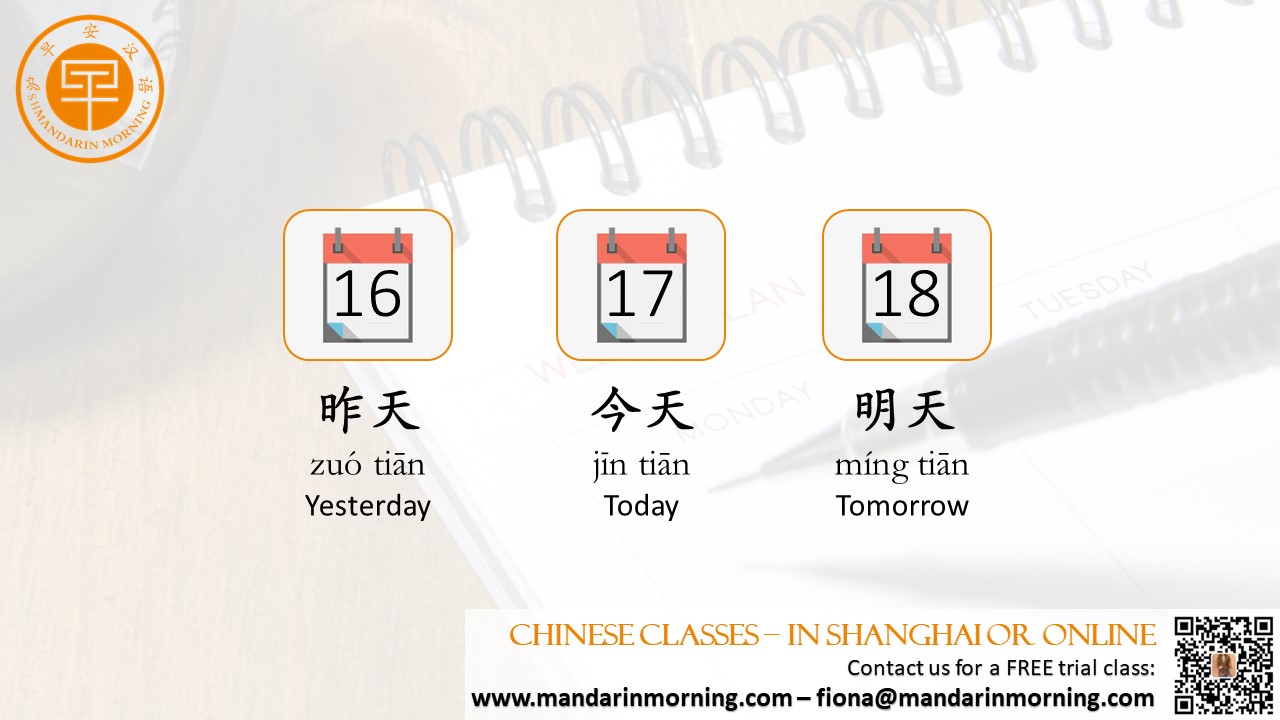| In this post we’ll look at how to structure a time phrase in Chinese. The basic structure of a time phrase in Chinese is: subject + time + verb phrase  Here are some examples of time phrases following the subject + time + verb phrase sentence pattern for time phrases in Chinese: I have to go to work tomorrow: 我明天去上班 (wǒ míng tiān qù shàng bān). Subject: 我 wǒ – I Time: 明天 míng tiān – tomorrow Verb phrase: 去上班 qù shàng bān – go to work He returned home yesterday: 他昨天回家了 (tā zuó tiān huí jiā le) Subject: 他tā – he Time: 昨天 zuó tiān – yesterday Verb Phrase: 回家了 huí jiā le - returned home Today they bought a new car: 他们今天买了一辆新车 (tā men jīn tiān mǎi le yī liàng xīn chē) Subject: 他们 (tā men) – they Time: 今天 jīn tiān – today Verb Phrase: 买了一辆新车 mǎi le yī liàng xīn chē – bought a new car Date Order in Chinese When talking about dates and times in Chinese the order must be stated from largest to smallest time measure: Year – Month – Day Example: 2020年 (nián) 1月 (yuè) 31日 (rì) – 2020 January 31 Below you can find more Chinese Date and Time Vocabulary Yesterday: 昨天 zuó tiān Today: 今天 jīn tiān Tomorrow: 明天 míng tiān Year: 年 nián Month: 月 yuè Day: 日 rì O’Clock: 点钟 diǎn zhōng Morning: 早上 zǎo shang Noon: 中午 zhōng wǔ Afternoon: 下午 xià wǔ Evening: 晚上 wǎn shang |